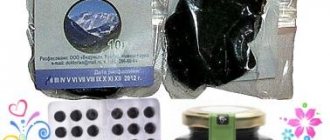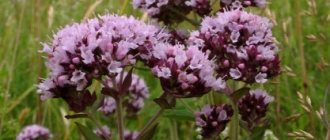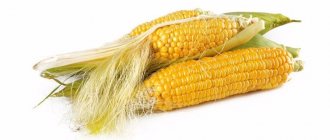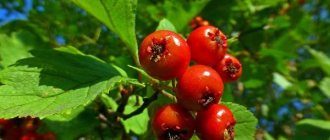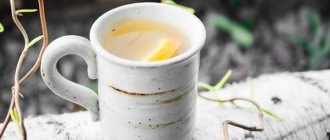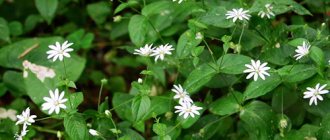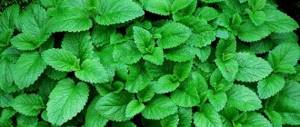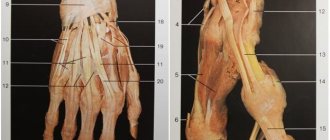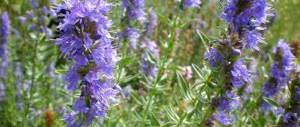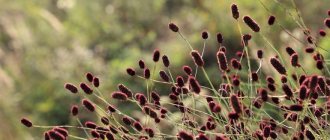Blue cornflower is a medicinal plant that has several medicinal properties. The second name of this plant is field cornflower. Therefore, when choosing a medicine at a pharmacy, you can pronounce both of these names.
Before use, consultation with a doctor is required!
Varieties and characteristics
Currently, botanists have described more than 700 varieties of this plant from the Asteraceae (Asteraceae) family. It is widespread everywhere - from the polar zones to the subtropics.
In the natural conditions of the middle zone, blue and meadow cornflowers are most often found.
Meadow often grows along roadsides, in wastelands, and clearings. This is a perennial herbaceous plant with a straight stem that reaches 80 cm and grayish rough leaves. Its flowers can be blue or light blue in color. The blue species is an annual plant that most often grows along with grain crops (damaging them as a weed) and on the edges of fields. Its petals are predominantly bright blue. Flowering of cornflowers begins in June and can continue until autumn .
All pitchforks have useful properties: they are valuable honey plants, used for decorative purposes, as a spice and for dyeing fabrics and Easter eggs blue. As for its use in folk medicine, blue cornflower is traditionally considered a more powerful remedy than meadow cornflower.
Meadow cornflower description application
Meadow cornflower Centaurea jacea L. is a perennial rough plant with an erect ribbed branched stem up to 1 m in height with lilac-purple flowers collected in 1-2 groups at the tops of the stems. It grows along paths, roads, in meadows and clearings in the European part of the country and Altai.
The marginal flowers have a leukoid corolla, sterile, designed for beauty and attracting insects; in the middle the flowers are tubular, bisexual, pollinated by insects, bees especially love nectar, this is a good honey plant.
Meadow cornflower blooms in June - July; inflorescences and grass are used for medicinal purposes. Cornflower inflorescences are harvested and dried during the flowering period, the grass is cut throughout the summer.
In folk medicine, an infusion of cornflower herb is used for stomach pain, headaches, jaundice, dropsy, and heart disease.
Externally, the infusion is used for bathing children with diathesis, for baths for rheumatism, as a lotion for eczema and purulent wounds. Poultices are used to treat muscle strains.
The infusion is used in the form of lotions for irritation of dry skin of the face, neck, hands, eczema and seborrhea of the head. The infusion is used in the form of lotions for conjunctivitis, night blindness, and furunculosis.
Meadow cornflower flowers contain flavonoids, alkaloids, mucus, ascorbic acid, and mineral salts.
An infusion of cornflower flowers has an antispasmodic and analgesic effect.
Preparation of infusion from cornflower flowers description:
One tbsp. Pour 2 cups of boiling water over a spoonful of flowers and leave for 30 minutes. Drink 1/4 cup 3-4 times a day 20 minutes before meals. Apply the same infusion externally.
To stimulate appetite and improve stomach function:
One tsp. pour 1 cup of boiling water over the flowers, boil over low heat or a water bath for 10 minutes, leave for 1.5 hours, strain, squeeze. Drink 1/3 cup in small sips three times a day before meals.
From the inflorescences of meadow cornflower you can get yellow paint for dyeing fabrics.
Bright colorful flowers of cornflowers at the height of summer not only delight us with their beauty, but can also bring great health benefits if we pay attention to their healing properties!
By
Chemical composition
Although the plant is included in the official pharmacopoeia, its chemical composition has not yet been studied very well. The stems and flowers are known to contain:
- pigment and cyanogenic glycosides;
- anthocyanins, the presence of which is responsible for the blue tone of cornflowers, which have a strong antioxidant effect;
- saponins;
- tannins;
- essential oil, which, although not yet isolated as a separate preparation, nevertheless has high biological activity;
- vitamins (ascorbic acid, rutin, etc.);
- trace elements (selenium, manganese, zinc, iron).
Thanks to the complex of these ingredients, the herb has very strong anti-inflammatory, antiseptic, diuretic and diuretic properties . However, the independent use of this plant can be not only beneficial, but also harmful: cyanogenic glycosides are toxic substances, and they can also accumulate in the body, so internal use has certain contraindications and limitations.
Medicinal properties
Even in ancient times, cornflower was used as a diuretic, then beneficial qualities were discovered in the treatment of colds, fevers, and liver diseases. Official medicine recommends flowers as an additional remedy for:
- edema of various origins,
- bile duct dyskinesia,
- cholecystitis and other liver diseases.
Cornflower can be used independently or as part of medicinal preparations. In addition, the benefits of lotions for relieving symptoms have been proven:
- conjunctivitis;
- blepharitis;
- hemeralopia;
- "tired eyes" syndrome;
- decreased visual acuity.
Traditional medicine notes healing effects for:
- treatment of intestinal disorders and chronic constipation;
- normalization of blood sugar levels;
- improvement of cardiac activity;
- harmonization of the neuropsychological state.
Its drugs are taken for colds, malaria and even pulmonary tuberculosis.
Folk recipes
In folk medicine, freshly picked and dried cornflower flowers, as well as its seeds, are used to prepare medicines.
Benefits of a fresh plant
Fresh mashed petals are applied to wounds and bruises, and powdered seeds are applied to warts, secured with a bandage that is changed at least once a day. The period of disappearance of the formation is from one to three weeks.
Infusion
Most often, the medicine is prepared by infusing a tablespoon of dry color into a glass of boiling water for an hour (in a thermos). You can also soak it for 15 minutes in a water bath. Take a tablespoon before meals three times a day for diseases such as:
- urethritis, cystitis, prostatitis, nephritis;
- diabetes;
- intestinal infections;
- biliary dyskinesia and other liver problems.
The product can also be used externally for:
- lotions and eye baths for redness and fatigue of the eyes, barley, conjunctivitis;
- rinses and compresses for neurodermatitis, furunculosis, non-healing wounds, eczema and other skin diseases;
- for cosmetic purposes - wiping the face for acne and the scalp for seborrhea.
If you have an oily face, you can prepare a healthy and effective lotion by adding a tablespoon of vodka to a glass of broth.
Alcohol tincture
To prepare an alcohol tincture, dry raw materials are poured with vodka in a ratio of 1 to 10. It must be infused in the dark, shaking occasionally, for two weeks. Take three times a day, diluting 30 drops in water. It is used for:
- problems with the liver and gall bladder;
- nervous overexcitation.
A teaspoon of tincture diluted in half a glass of water is used for rinsing for toothache.
Use in cooking
In addition to its pronounced medicinal properties, cornflower is widely used in traditional cuisine. The flowers and seeds of the plant are used, dried and crushed. The seasoning in powder form can occasionally be seen in supermarkets; cornflower is often included in various mixtures for pickles, soups or meat.
The preparations can be well diversified with the help of petals and cornflower seed powder. They impart a subtle mint-lemon aroma and improve the preservation of pickles. The recipe is extremely simple, you should add 10-15 g of powder and 2 teaspoons of petals to a three-liter jar of canned vegetables.
Cornflower leaves have a subtle but expressive taste, something between lemon, mint and cloves. The seeds are a bit like red chili peppers, but with a slight minty flavor. This combination goes well with a universal sauce for rice, mashed potatoes and meat dishes.
Sauce
For cooking you need the following products:
- beef or chicken broth - 2 tablespoons;
- grated tomatoes – 1 tablespoon;
- butter – 15 g;
- dried cornflower flowers – 1 teaspoon.
It is better to use natural broth, but you can make it from a cube. This also applies to tomatoes; if there are no fresh ones, then it is permissible to take boiled canned ones from a jar. All ingredients must be heated in a container and mixed until smooth. If the sauce is made for meat, then it is good to add a little rosemary.
Salad
A spring salad that charges you with vigor and strength - it also cannot do without cornflower. To prepare it you need:
- fresh dandelion leaves – 50 g;
- fresh dill – 10 g;
- hare cabbage – 50 g;
- borage or borage – 100 g;
- sour cream 20% fat – 25 g;
- cornflower seed powder – 10 g.
Soak the leaves in a bowl of water and leave for 15-20 minutes. Then let the liquid drain and chop finely. Mix everything in a dish or bowl, add cornflower seed powder and sour cream. Use other seasonings and salt to taste. Green onions or early radishes go well with the salad. But these are not required ingredients of the dish.
Vegetable side dish
A healthy vegetable side dish can be prepared quickly. The following components will be required:
- beets – 250 g;
- flour – 50 g;
- vegetable oil – 30 g;
- dried cornflower flowers – 10 g;
- citric acid – 2–3 g;
- salt, pepper and other seasonings - optional.
The beets must be boiled until tender, right in the peel, as is done for salads. Then peel the cooled vegetable and chop it on a coarse grater. Pour half of the vegetable oil prepared for the recipe into a frying pan and fry the flour until golden. Now add grated beets, cornflower flowers, citric acid, spices, about 100 ml of water and the rest of the oil. Simmer covered over low heat for 10–15 minutes.
Borsch
You can also cook unusual borscht, which is very tasty and healthy. Required:
- meat broth – 500 ml;
- white cabbage – 100 g;
- onion – 1 pc.;
- beets – 50 g;
- potatoes – 2 pcs.;
- carrot – 1 pc.;
- boiled egg – 1 pc.;
- classic tomato sauce – 1 tablespoon;
- sour cream 20% fat – 25 g;
- dried blue cornflower petals – 15 g;
- spices, herbs - optional.
Borscht is prepared in a classic way, according to your favorite recipe. The differences begin at the final stage of preparation. Part of the onion must be sautéed and left like tomato paste. Add them 10 minutes before readiness, along with cornflower and spices. If greens are used, they should be added after another 5 minutes. Already to serve, add sour cream and a cut boiled egg to the plate. This borscht turns out to be extremely tasty and healthy.
Contraindications
Like many medicinal plants, cornflower can be harmful if used incorrectly.
There are no contraindications for external use (except for possible allergic reactions).
The main prohibitions when taking it orally are associated with pregnancy and a tendency to uterine bleeding, as well as under the age of 12 years.
The high concentration of cyanide in flowers and their tendency to accumulate in the body can be harmful over long-term use. Therefore, the course of internal treatment should not exceed a week - this is enough to eliminate acute symptoms.
Cornflower blue
Blue cornflower (sowing)
- an annual herbaceous representative of the Asteraceae family. It often flaunts on forest edges, clearings, among a variety of meadow or steppe plants, along paths and along roadsides. In plowed fields and vegetable gardens they constantly get rid of it as a malicious weed. But this is a valuable medicinal plant, as well as a beautiful wildflower, ideal for creating a beautiful Moorish lawn.
It has a thin tap root and an erect, ribbed, rough, branched, pubescent stem, reaching a height of 20-90 cm. Along the entire length of the shoots there are sparsely located narrow lanceolate and notched leaves with pubescence.
It blooms in single, relatively large baskets located at the ends of the shoots. Along their edges there are funnel-shaped flowers of a bright blue color, and inside there are tubular flowers of a blue-violet hue. It blooms not only with blue, but also with blue, lilac, violet, and white flowers. It blooms from June to September. After flowering, the seeds located in the center of the inflorescence are set, since the marginal flowers are sterile and do not form seeds.
Propagates well by self-sowing. Ripe seeds have a tuft. They are carried by the wind and germinate next year.
For planting in a flower garden, seeds are sown in the spring. They grow together. In order to obtain beautiful tall plants, dense shoots must be thinned out. Place it in an open sunny place. It is very unpretentious and, like any other field plant, does not require special care.

